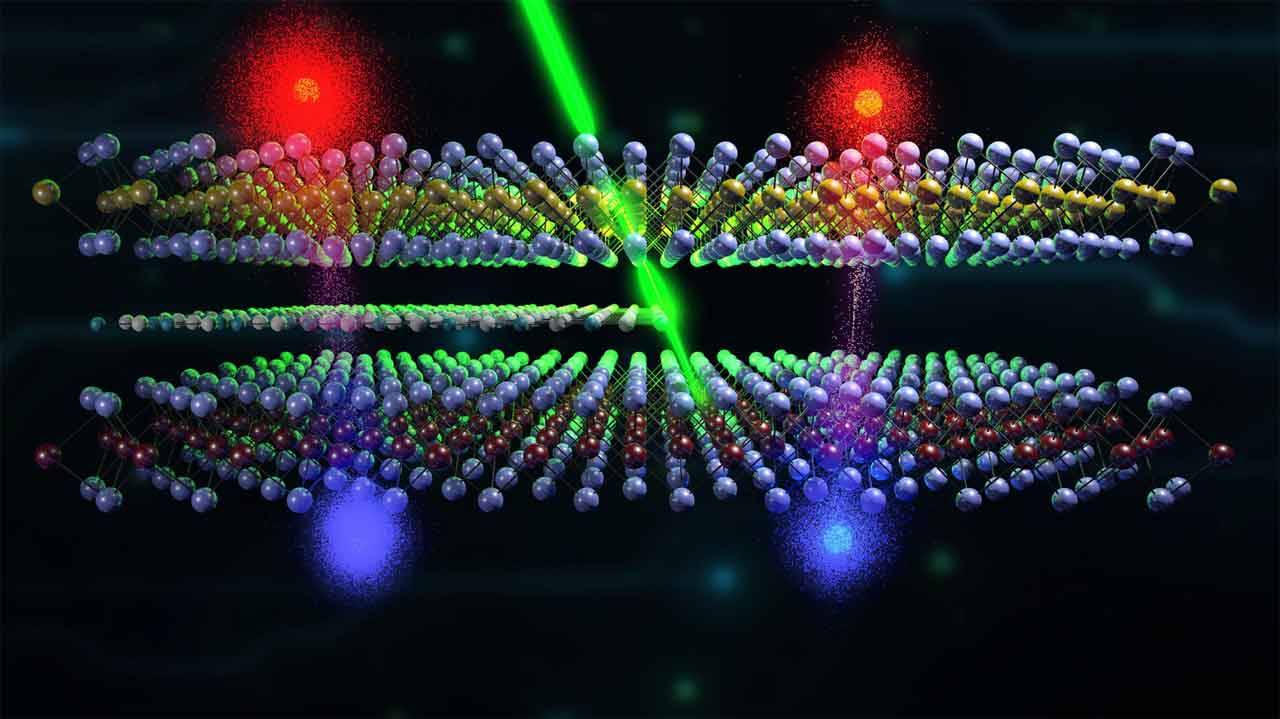The University of Texas at Dallas has shown that an inventive technique for creating ultrathin semiconductors can result in materials where excitons survive up to 100 times longer than those produced using alternative techniques.
Excitons, which are quasiparticles capable of transporting energy, can last for long enough to support a wide variety of potential applications including bits in quantum computing devices.
Anton Malko, a professor of physics at the School of Natural Sciences and Mathematics is the corresponding writer of a paper that was published online on March 30th in Advanced Materials. It describes tests on ultrathin silicons using a recently invented method called laser-assisted synthetic technique (LAST). The results show that quantum physics can be applied to new problems.
Semiconductors can be described as a class of crystalline solids that have electrical conductivity between an insulator and a conductor. These conductivity elements are essential for modern electronic technology, such as transistors and diodes. They can be controlled externally by electrical gating or doping.
Two-dimensional transitional metal dichalcogenides are ultrathin semiconductor that consists of a transition element and a chalcogen. They can be found in one atomic layer. TMDs have been examined for about a decade, but the 2D version Malko investigated has both optoelectronic and scalability advantages.
“The LAST procedure is incredibly pure. Pure molybdenum, tungsten, selenium, or sulfur are obtained and vaporized under strong laser light, according to Malko. The TMD layer is two-dimensional and less than one nanometer thick once the atoms are dispersed across a substrate.
Excitons are quasiparticles capable of transporting energy and remaining electrically neutral, so they can partly determine a material’s optical properties.
In order to maintain neutrality, a semiconductor captures photons and generates an electron that is positively charged and linked with a positive charge. This pair is the exciton. Malko observed that although there are Coulomb interactions between them, they are not entirely free from one another.
Malko, along with his team, was amazed to discover that excitons from LAST-produced TMDs could last up to 100x longer compared to other TMD materials.
He said that the 2D samples were optically different from anything he’d seen in 10 years of working with TMDs. “We began to examine it more closely and realized that it wasn’t a fluke. It’s repeatable and dependent on growth conditions.
Malko believes that these longer lives are due to indirect excitons which are optically inactive.
He explained that excitons can be used to slow feed optically active excitons.
Dr. Navendu Mondal is the lead study author. He was a former postdoctoral researcher at UT Dallas and is now a Marie Sklodowska–Curie Individual Fellow, Imperial College London. He believes that the indirect excitons are caused by the abnormal amount of strain between monolayer TMD material (and the substrate) on which it grows.
Mondal stated that strain-controlling in atomically thin monolayer TMDs is a useful tool to adjust their optoelectronic characteristics. Their electronic band structures are highly sensitive to structural changes. Band-gap modifications can cause various indirect dark excitons to form under enough strain. These excitons are optically inactive. This discovery reveals how dark hidden excitons influence excitons that are directly created by photons.
Malko stated that the strain created by 2D TMDs is similar to the strain that would be caused by pressing the material with micro- or nanosize pillars. However, this is not an option for thin layers.
He stated that this strain was crucial in creating the optically inactive indirect excitons. “If you remove the substrate, then the strain is freed and the wonderful optical response disappears.”
Malko stated that indirect excitons can both be electronically controlled and converted to photons. This opens up the possibility of developing new optoelectronic products.
He said that the increased lifespan could have many interesting applications. An exciton with a life span of fewer than 100 picoseconds is not worth the effort. This material allows us to create a reservoir that can hold inactive excitons for much longer periods of time, a few nanoseconds rather than hundreds of picoseconds. This material can be used to do many things.
Malko stated that the research results are a strong proof of concept for future quantum-scale devices.
He said that it was the first time anyone had made a fundamental observation of long-living excitations within TMD materials. It is long enough to be used as a quantum bit, or for light harvesting in solar cells. These excitation lifetimes are beyond what is written in the literature. However, we now know why they exist.
Next, the researchers will attempt to manipulate excitons using an electric field. This is a crucial step toward creating quantum-level logic elements.
Malko stated that “classical semiconductors” have been reduced to the bare minimum before quantum effects alter the game completely. It’s a significant step to apply gate voltage and demonstrate that 2D TMD material will work in future electronic devices. The size limit for silicon is 10 times smaller in 2D TMD materials than it is for atomic monolayers. Can you make logic elements that small? This is what we need to discover.”
